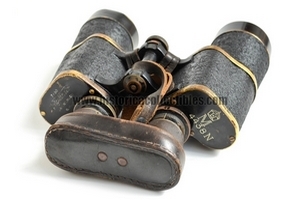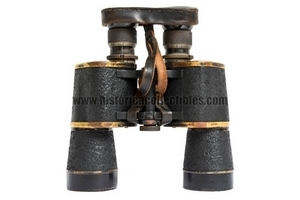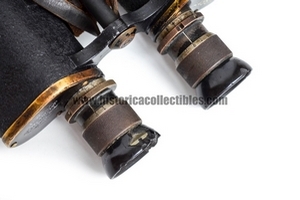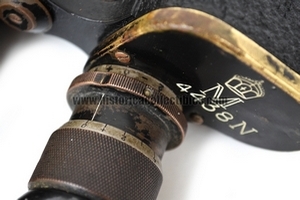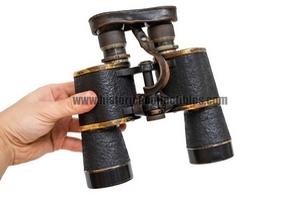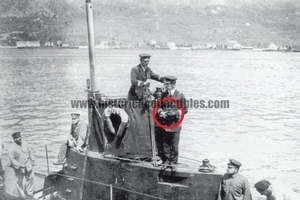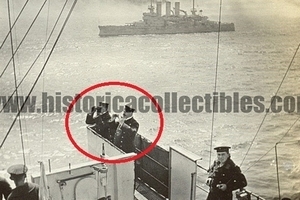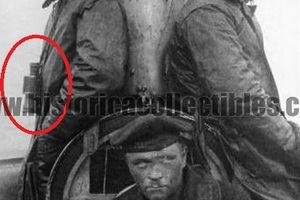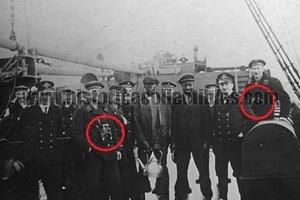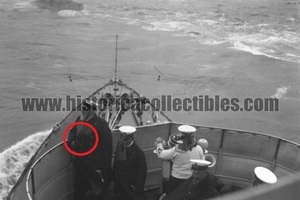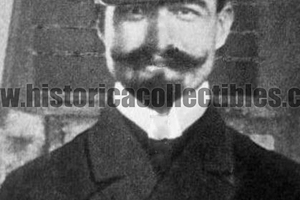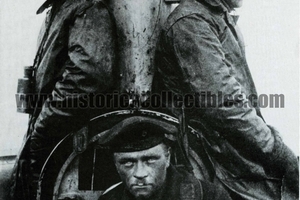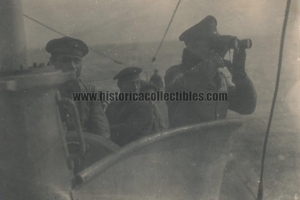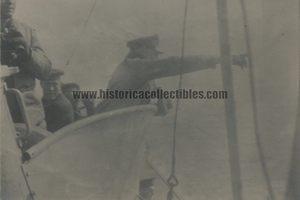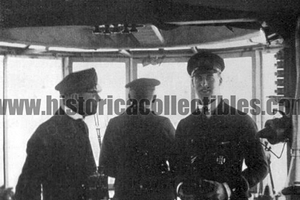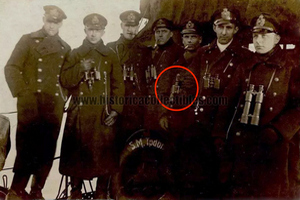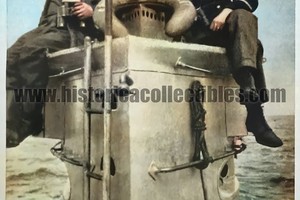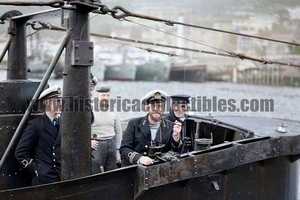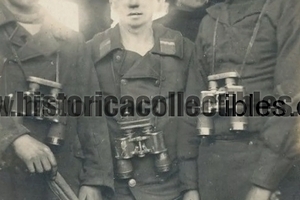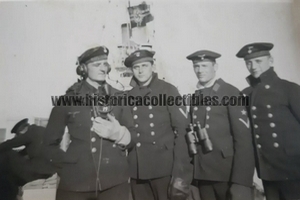Binoculars 7x50 Voigtländer Braunschweig Kaiserliche Marine, circa 1908
7x50 binoculars, produced in a limited number of pieces, by Voigtländer Braunschweig, with serial number 39843, in around 1908, for the Imperial German Navy, with naval assignment number (could also include submarines) 4438 N with Imperial crown and " M" for Marine.
This binoculars has a "special feature" (Okularhemmung - Ocular Locking System), that distinguishes them from other binoculars used during the First World War, is equipped with a system for memorizing and locking the visual focal length on each individual eyepiece. Therefore, once you have found the focal length, simply rotate the knurled ring on the eyepiece tube and position it on "0".
The binoculars are in good condition, the view is clear and collimated. Only a small chip on the right prism which does not affect vision. In addition to the leather benutzer (eyepiece caps), there is a jacket attachment, also made of leather.
Voigtländer Braunschweig was created in Vienna in 1756, the company took its name from its founder, Johann Christoph Voigtländer and initially produced optical instruments, intended in particular for microscopes and other scientific equipment.
Among the first creations were the Petzval type lenses, and others destined to become famous, such as the Collinear and the Heliar. In 1840 he built the first lens for cameras, while in 1841 the first entirely metal daguerreotype was developed. He subsequently produced plate machines, built in a practically artisanal way.
In 1849 the headquarters were moved to Braunschweig, Germany, where Voigtländer & Sohn was born shortly thereafter. In 1925 it was purchased by Schering AG. Voigtländer later oriented its production towards photographic devices accessible to all, and this allowed it to remain among the market leaders until after the Second World War.
In 1958 it was bought by the Carl Zeiss Foundation and in 1972 it was renamed "Zeiss Ikon Voigtländer". In 1973 the brand became the property of Rollei until the crisis of 1982. At this point the brand was bought first by "Plus foto", which from 1980 marketed Voigtländer cameras produced by Ricoh and Chinon and then in 1995 by "Ringfoto", but this represents more than anything a long period of darkness. Finally in 1999 the brand was reborn with the purchase by the Japanese Cosina.

